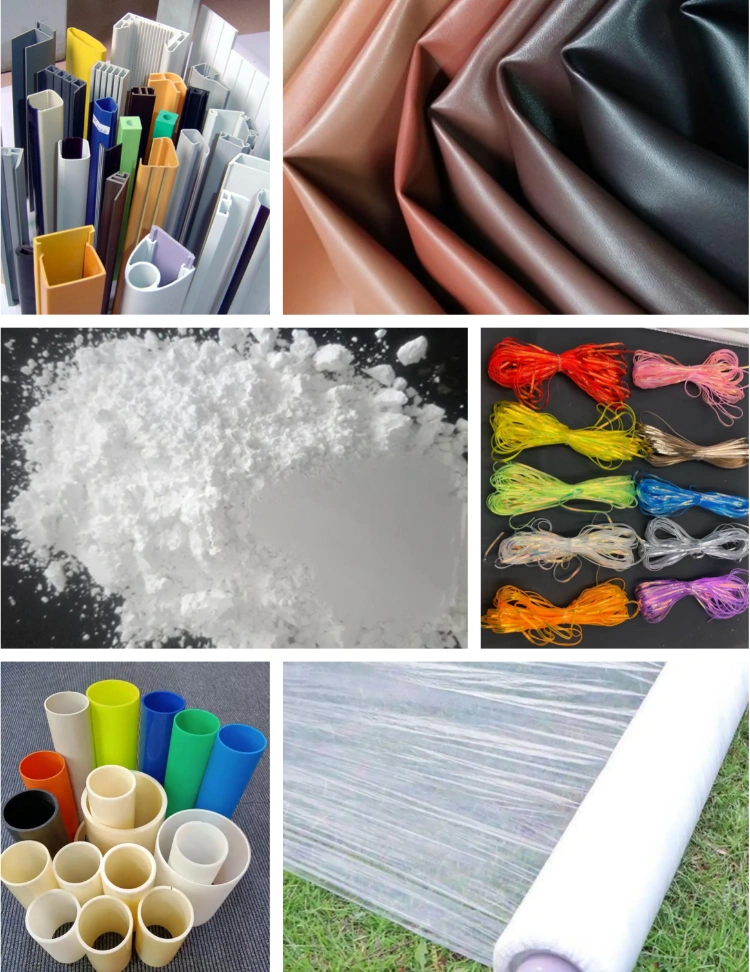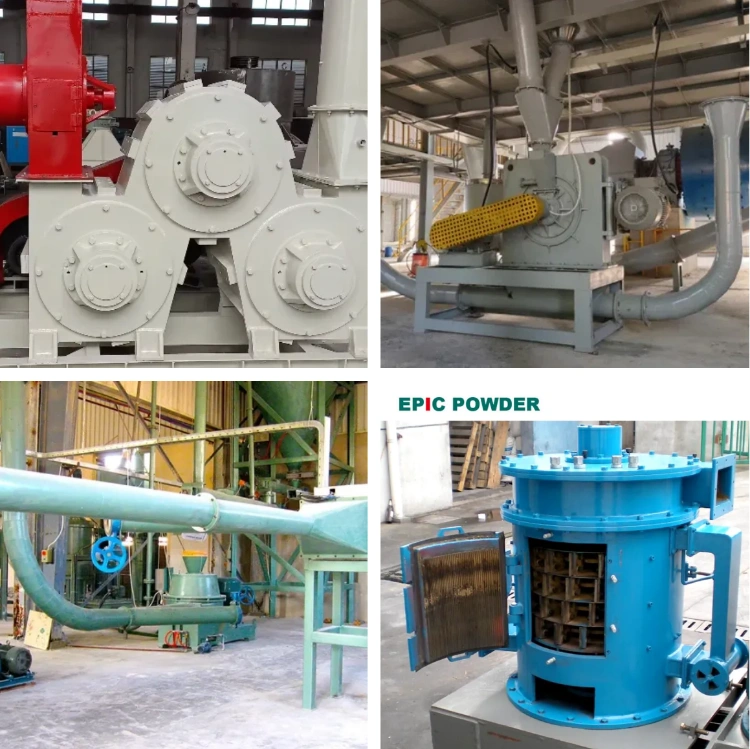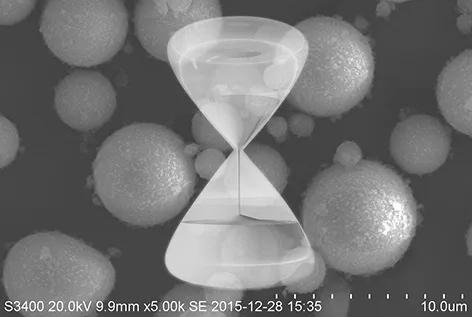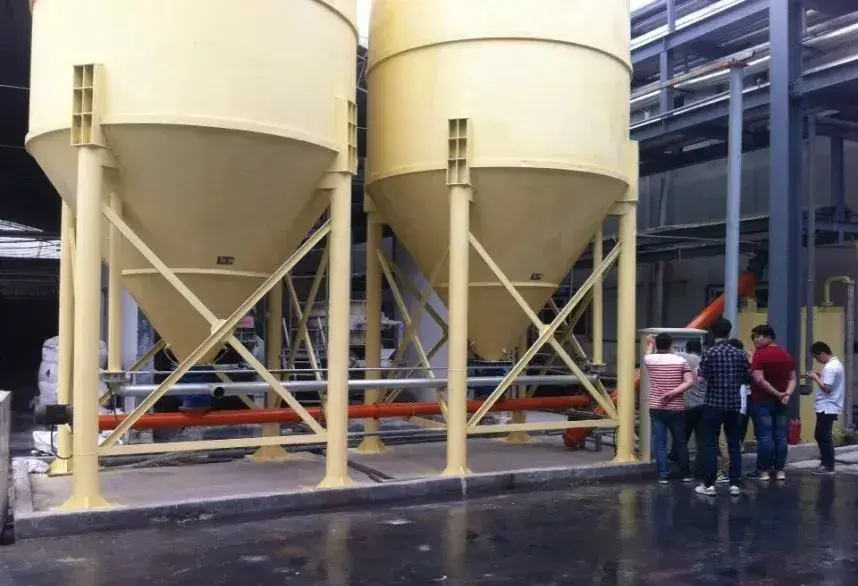Heavy calcium carbonate, with its excellent performance, is the preferred filler in the plastic industry. Heavy calcium carbonate for plastics undergoes special processing to ensure uniform particle size and good dispersion. It is widely used in plastic films, profiles, pipes, woven fabrics, and artificial leather production. It effectively reduces production costs and replaces expensive white pigments like titanium dioxide, improving whiteness. At the same time, heavy calcium carbonate for plastics improves physical properties, enhancing surface gloss and smoothness. It also increases hardness and rigidity, improving the overall quality of plastic products to meet market demands. So, what are the specific requirements for heavy calcium carbonate in the plastic industry? Why are these requirements needed?

whiteness
The whiteness of heavy calcium carbonate mainly affects the color and appearance of filled plastic products, but does not impact their mechanical and processing properties. The higher the whiteness, the less it affects the coloring of filled plastics. Under the same performance conditions, higher whiteness has a greater competitive advantage.
For heavy calcium carbonate for plastics, the higher the whiteness, the better. For general plastic use, the whiteness requirement is above 92%, while for high-end plastic filler masterbatches, the whiteness requirement is 95% or higher.
impurity content
The impurity content not only affects the color and appearance of filled plastic products but also impacts the material’s mechanical and processing properties.
For heavy calcium carbonate for plastics, the lower the impurity content, the better, and the higher the calcium carbonate content, the better. The main impurities affecting plastics are Fe2O3, MgO, and SiO2.
A high Fe2O3 content can affect the color of heavy calcium carbonate powder, causing yellowing, especially when combined with acidic substances like stearic acid during surface treatment. At high temperatures, this yellowing is more likely, and iron ions can accelerate plastic aging.
High MgO content in heavy calcium carbonate powder can cause grayish color. For instance, if dolomitic heavy calcium carbonate is added to polyethylene and polypropylene plastics, the entire filler may appear gray because dolomite consists mainly of calcium carbonate and magnesium carbonate.
The presence of SiO2 can cause mild crosslinking or thermal degradation in PVC, reducing its thermal stability. Additionally, high silica content in heavy calcium carbonate powder increases particle hardness, causing significant wear on plastic processing machinery. For example, filler masterbatches made with silica-rich heavy calcium carbonate can cause excessive wear on cutting blades when used in polypropylene tape production.
Particle size and distribution
Particle size and distribution are key indicators of heavy calcium carbonate quality. They mainly affect mechanical properties. In theory, the finer the particle size, the stronger the filled plastic product becomes. However, this isn’t always true in practice. As the particle size decreases, the specific surface area increases, and surface energy becomes higher. The primary particles easily agglomerate, forming clusters that are added to the resin. This results in poor dispersion and unstable interfaces, leading to reduced product performance.
Therefore, heavy calcium carbonate for plastics requires an appropriate fineness, not the finest possible. The commonly used particle sizes for heavy calcium carbonate powder are generally in the range of 400-1250 mesh. Around 65% of the market uses powders in the 400-800 mesh range, about 30% uses powders in the 800-1250 mesh range, and powders finer than 1250 mesh account for approximately 5-10%.
For filled plastics, under the same filler loading conditions, the finer the particle size of the filler, the better the mechanical properties of the filled plastic. However, this is only true if the heavy calcium carbonate particles are evenly dispersed in the plastic matrix. The indicators of particle size and its distribution not only require D97 and D100 values, but also the 2μm content, average particle size (D50), and specific surface area. These indicators indirectly reflect the dispersion quality of the heavy calcium carbonate powder and its oil absorption value.
Particle morphology and crystal form
The particle morphology of heavy calcium carbonate has a significant impact on the filling and modification of plastics. For example, fibrous or plate-like structures benefit the mechanical strength of PVC composites, but are detrimental to molding and processing performance. In contrast, spherical fillers improve molding and processing performance but reduce the material’s mechanical strength.
The influence of crystal structure has begun to attract attention in the industry. Generally, fine-grained anhedral, semi-anhedral, equigranular, or blocky structures of natural limestone-based heavy calcium carbonate are more favored in the plastic industry.
Oil absorption value

For heavy calcium carbonate used in plastics, the oil absorption value should generally be as low as possible. A high oil absorption value will absorb plasticizers into the filler, causing it to lose its plasticizing effect. To achieve the desired flexibility, additional plasticizers would be required, which increases production costs.
Surface modification is an important method to reduce the oil absorption value of powders. After surface modification, the agglomerated particles of calcium carbonate are reduced, dispersion improves, and the voids between particles decrease. Moreover, the modification molecules covering the surface of the calcium carbonate further reduce internal particle voids. This coverage also alters the surface properties of calcium carbonate, reducing its surface polarity, lowering friction between particles, and improving lubrication. As a result, the particles pack more tightly, increasing bulk density and reducing oil absorption value.
Water and low molecular weight substances
Moisture and low molecular substances are major concerns for any plastic products. Moisture and low molecular substances cause surface defects and wrinkles on the products. In severe cases, they create a honeycomb structure inside the product or cause material bridging during transport. This not only affects the mechanical properties but also impacts the product’s appearance.
conclusion
The whiteness, impurity content, and crystal structure of heavy calcium carbonate products are primarily influenced by the ore grade. Particle shape, size, and distribution are closely related to raw materials, processing equipment, technology, and control levels.
Therefore, heavy calcium production companies should first select ores based on plastic industry requirements. Then, they must ensure that processing equipment and technology meet the requirements for fine processing. This approach enables heavy calcium products to realize value and price advantages in the respective plastic industries, increasing product added value.
epic powder
Epic Powder, 20+ years of work experience in the ultrafine powder industry. Actively promote the future development of ultra-fine powder, focusing on crushing,grinding,classifying and modification process of ultra-fine powder. Contact us for a free consultation and customized solutions! Our expert team is dedicated to providing high-quality products and services to maximize the value of your powder processing. Epic Powder—Your Trusted Powder Processing Expert !

